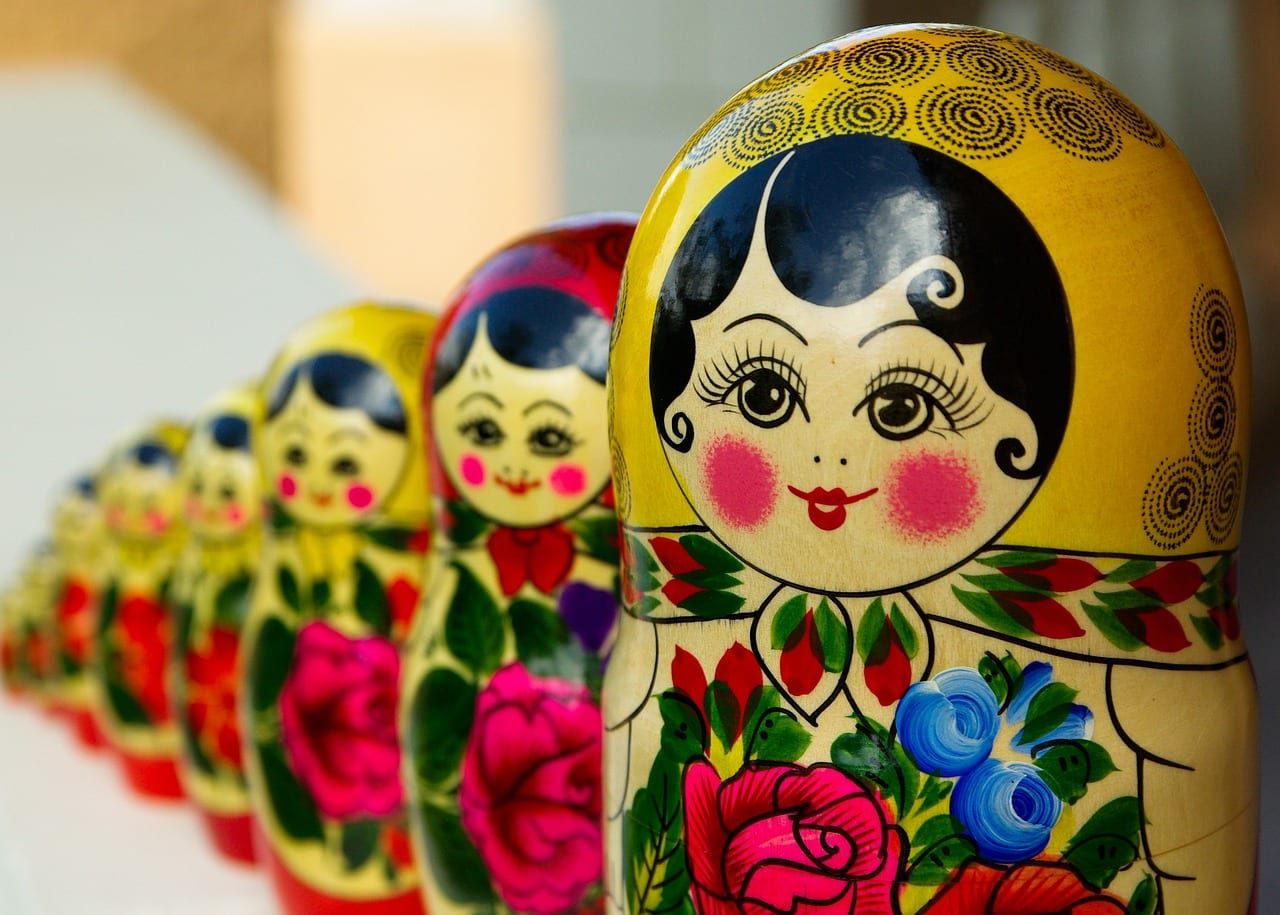Matryoshka dolls likewise known as babushka dolls, stacking dolls, nesting dolls, Russian tea dolls, or Russian dolls are a collection of wooden dolls of lowering size placed one inside each other. The name matryoshka, essentially “little matron“.
A set of matryoshkas consists of a wood figure, which separates at the center, starting from the largest, to reveal a smaller of the very same doll inside, which has, in turn, another doll within it, and so on. They’re made of hollow wood, and the initial designs were intended to hold small gifts for children inside each smaller doll enclosed in another larger one until finally reaching the smallest wooden figure which can be removed or opened up entirely when it’s time to access all the contents within.
The very first Russian doll collection was made in 1890 by woodturning artisan and woodcarver Vasily Zvyozdochkin from a design by Sergey Malyutin, who was a people crafts painter at Abramtsevo. Generally, the external layer is a female, wearing a sarafan, which is a long and also shapeless conventional Russian peasant jumper gown.
The dolls inside might be of any gender; the tiniest, innermost doll is normally an infant crafted from a single piece of wood. Much of the creativity is in the painting of each doll, which can be very intricate. The dolls typically adhere to a theme; the themes might differ, from fairy tale personalities to Soviet leaders.

What does a Matryoshka doll symbolize?
A Matryoshka doll is a Russian nesting or stacking toy which usually consists of five wooden dolls. The biggest one represents the oldest female in the family and each subsequent smaller doll symbolizes her children with an even smallest baby-doll representing their youngest son/daughter respectively.
When the early nesting dolls were created, all of them existed with women as their largest dolls. That is since a majority of symbols on the matryoshka dolls were of showing a female’s fertility as well as parenthood. The shape of the big-bellied doll represented a mother’s stout figure and her significance in the family by the nesting of her “children” dolls inside.
Mothers play a large role in the standard Russian household; being the holder of life and also her capability to increase her offspring is simply one of them.
In the country, having a big family is considered a common characteristic as well as even an important one; there are normally more than 3 children, in addition to members of the extended household live under one roofing system with them. Each family member is believed to have their very own special duty in the family residence.
How can you tell if a Matryoshka doll is real?
An authentic matryoska doll is typically marketing in large Russian cities such as Moscow or Saint Petersburg. They are made out of Lime wood that is defect free. If you see lots of dings on the dolls or if they are not wooden with traditional golden trim, they are probably not real.
Without opening the doll, you can determine if it’s real or not by its weight. If all Matryoshka dolls weigh approximately three pounds then your Matryoshkas are authentic!
Russian nesting dolls of good quality usually open as well as close with quite a bit of effort by pushing and turning the two pieces of the largest doll. If the dolls squeal slightly as you open them it is probably real. As this characteristic is typical with Lime wood in the crafting of these dolls.
What is the difference between matryoshka and babushka?
Lots of people think that babushka and matryoshka have the exact same definition. That is why some individuals call these dolls babushka dolls. Nevertheless, babushka as well as matryoshka are two separate meanings. Babushka, in Russian, describes an old woman, while matryoshka implies mother.
How many dolls are in a Matryoshka?
The collections of nesting dolls might consist of as few as 3 or as numerous as 25 nests or dolls; historically, collections consisting of approximately 1,800 dolls are known. A traditional set consists of three to twelve dolls.
Interested in different types of dolls?
Check out Anatomically Correct Dolls 101 for the history and usage of these dolls.
